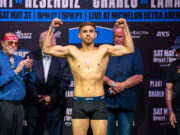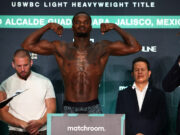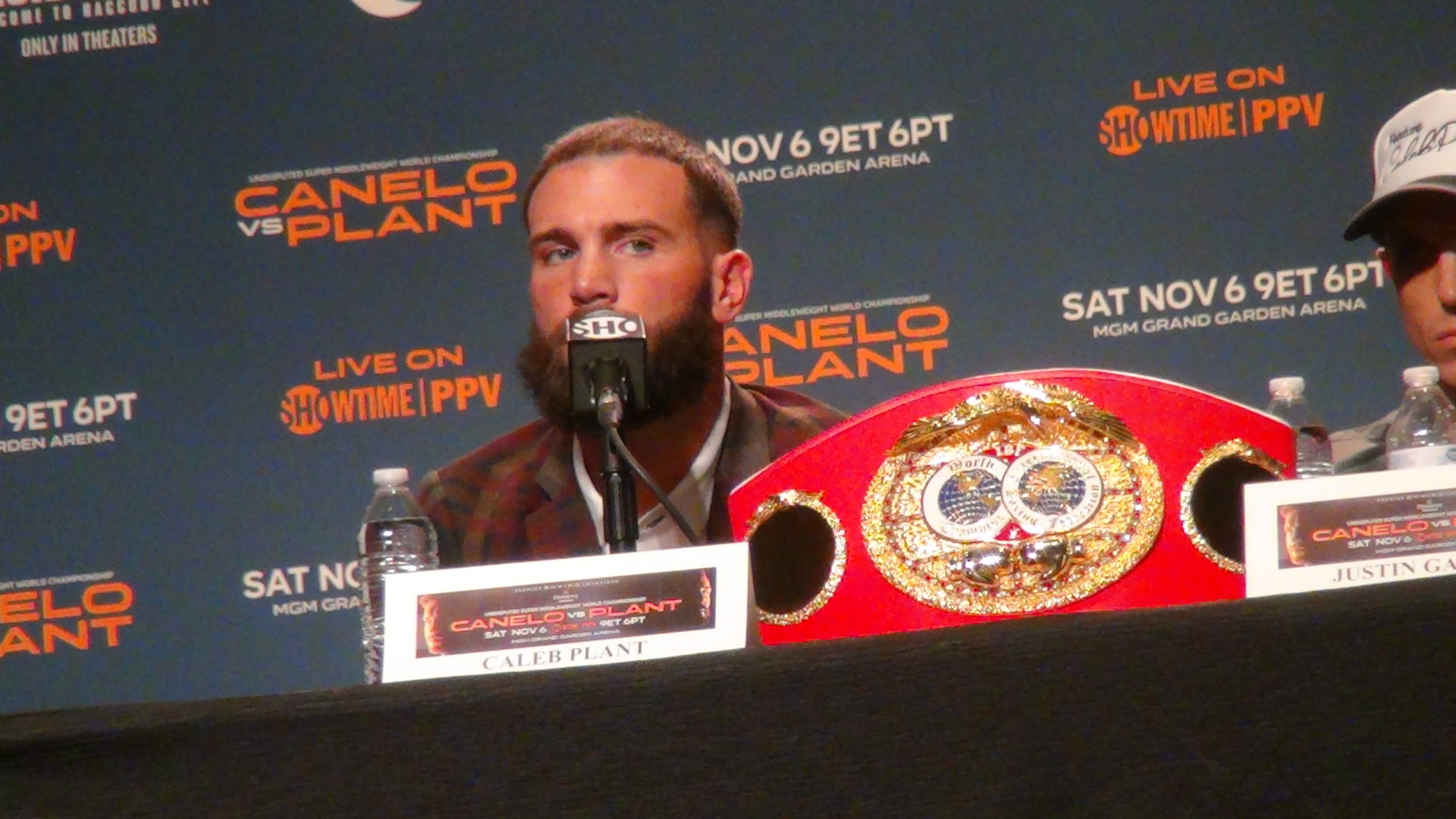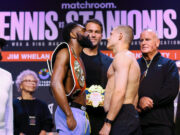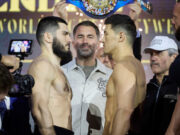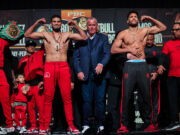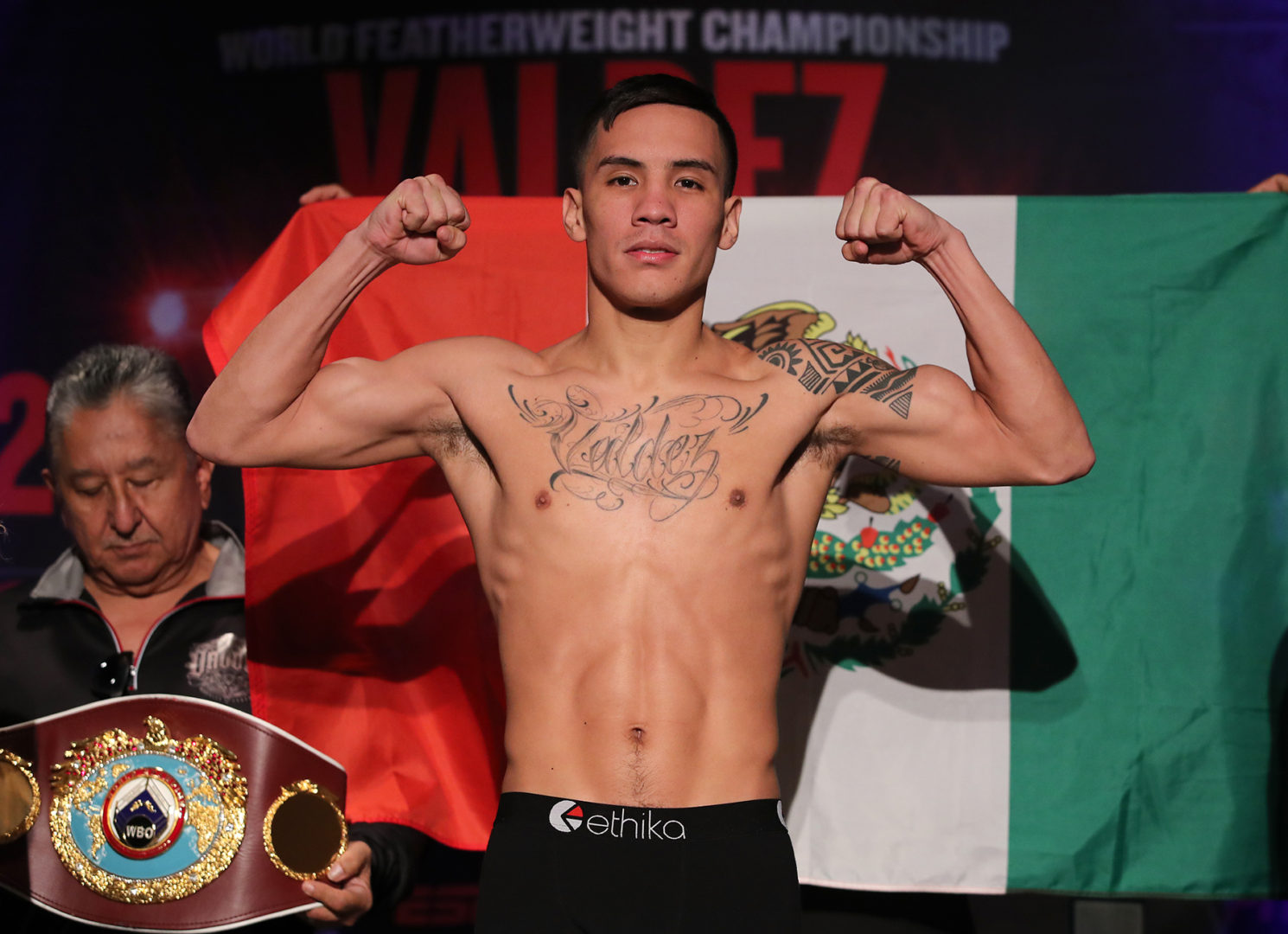
By Norm Frauenheim–
Oscar Valdez was motivated by a chance to shut mouths. He did that, including this one. But his compelling stoppage of Miguel Berchelt was – make that is – more than immediate satisfaction gained from silencing the doubters.
It is validation, enduring proof, of who he is. It was there in a victory loaded with lessons for a cynical business short on patience and poise. Quaint notions, both, but Valdez practices them with faith impossible to break. Fracture his jaw, but not his ethics.
They are why he won, leaving the feared Berchelt face- down on the canvas last Saturday. That patience and poise, instead of purses and pound-for-pound claims, are why we’re still talking about a fight that happened nearly a week ago, almost an era today in the social-media’s accelerated time zone. A good guy won in a timeless way.
Maybe, it takes him into a fight with Shakur Stevenson. Or maybe, Gervonta Davis. Already, the cynics are circling, saying he wouldn’t have much of a chance against either. If that sounds familiar, just look at last week’s headlines and odds. Very few suggested that Valdez had any chance.
But cynics beware. Valdez is the defining face of what it is to overcome. A broken jaw didn’t finish him in the rain against Scott Quigg three years ago. He was carried out on a stretcher, looking very much like a fighter who won what some believed was his last stand.
But only his jaw was broken. Not his resiliency. The jaw healed and left a lesson he used to propel himself to what has become a great story for a sport with too few. He started over in a place and in a corner that allowed him to find himself. In Eddy Reynoso, Valdez found his identity.
It was evident in a couple of fight-turning moments midway through the bout. It was further affirmed in colleague Bart Barry’s brilliant column Monday. https://theboxinghour.com/oscar-eddy-and-the-power-of-powerful-questions/
Both are evolving. But that mutual evolution wasn’t clear until those middle rounds, one that could have taken a nasty turn with Valdez instead of Berchelt face-down in the 10-round. Their mutual understanding of what was happening and what was at stake was the key.
Berchelt survived a shaky fourth and began to exert himself. Signs of Valdez, pre-Quigg, were evident. His face was flushed. He looked as if he were about to sacrifice poise and smarts to an instinct that had taken over so often. He would brawl, which was a sure way to lose.
But he didn’t. Reynoso was there to remind him to remember the plan and resist the temptation. It was timely, advice strategically brilliant because of how it was carefully delivered and then stubbornly executed.
The trainer-fighter relationship is often nothing more than personal chemistry. Think Freddie Roach and Manny Pacquiao. But Reynoso-Valdez looks to be something even more. They’re both students, learning from each other. Teaching each other, too.
Until those moments in the middle rounds of Valdez’ victory for a junior-lightweight title, it was hard to get a solid read on Reynoso. Turns out, that was unfair. He’s best known for Canelo Alvarez, who ranks among the game’s most accomplished fighters.
The assumption was that Canelo would make any trainer look good. Think of Phil Jackson, whose coaching abilities were somehow questioned simply because he had Michael Jordan in Chicago and Kobe Bryant with the Lakers.
Reynoso was a virtual novice when he moved into Canelo’s corner. After Canelo’s lone loss in a one-sided decision to Floyd Mayweather Jr. in 2013, I still remember the great Rafael Mendoza, a Hall of Fame manager, telling me that Canelo would have to learn on his own.
The insightful Mendoza, a former Mexico City sportswriter, had worked with Canelo early in his career. Both lived in Guadalajara. But he split with Canelo, he said, because he wanted Eddy and his father, Chepo, to hire a more experienced trainer.
The Reynosos were there for Canelo in the beginning, but as investors not as trainers. Mendoza, who died in May 2018, wanted a more experienced voice. Not sure who he had in mind, but I’m guessing Mexican legend Nacho Beristain, whom he brought into Humberto Gonzalez’ corner after a 1993 loss to Michael Carbajal. With Beristain, Gonzalez won the next two fights in a junior-flyweight trilogy, beating Carbajal by narrow decisions in both.
We’ll never know how Canelo would have fared with Beristain instead of Eddy Reynoso. By then, Beristain was more of a revered teacher, an authoritarian never to be questioned. But I’m betting Mendoza would be applauding how Eddy Reynoso has transformed himself into the best trainer of the day. He listens, and It’s clear that Valdez and Canelo listen to him.
It’s that intriguing evolution that makes watching worthwhile. I’ll even watch Canelo Saturday against the longest of longshots, 50-to-1 underdog Avni Yildirim, in a super-middleweight title fight (DAZN 8 pm ET/5 pm PT) at the Dolphins stadium in south Florida. However, I wouldn’t watch if not for what was seen in Valdez’ triumph over Berchelt.
The head movement, jab and footwork exhibited by Valdez have been there at an ever-improving rate in Canelo.
They’re still learning.
So, too, are we all.



